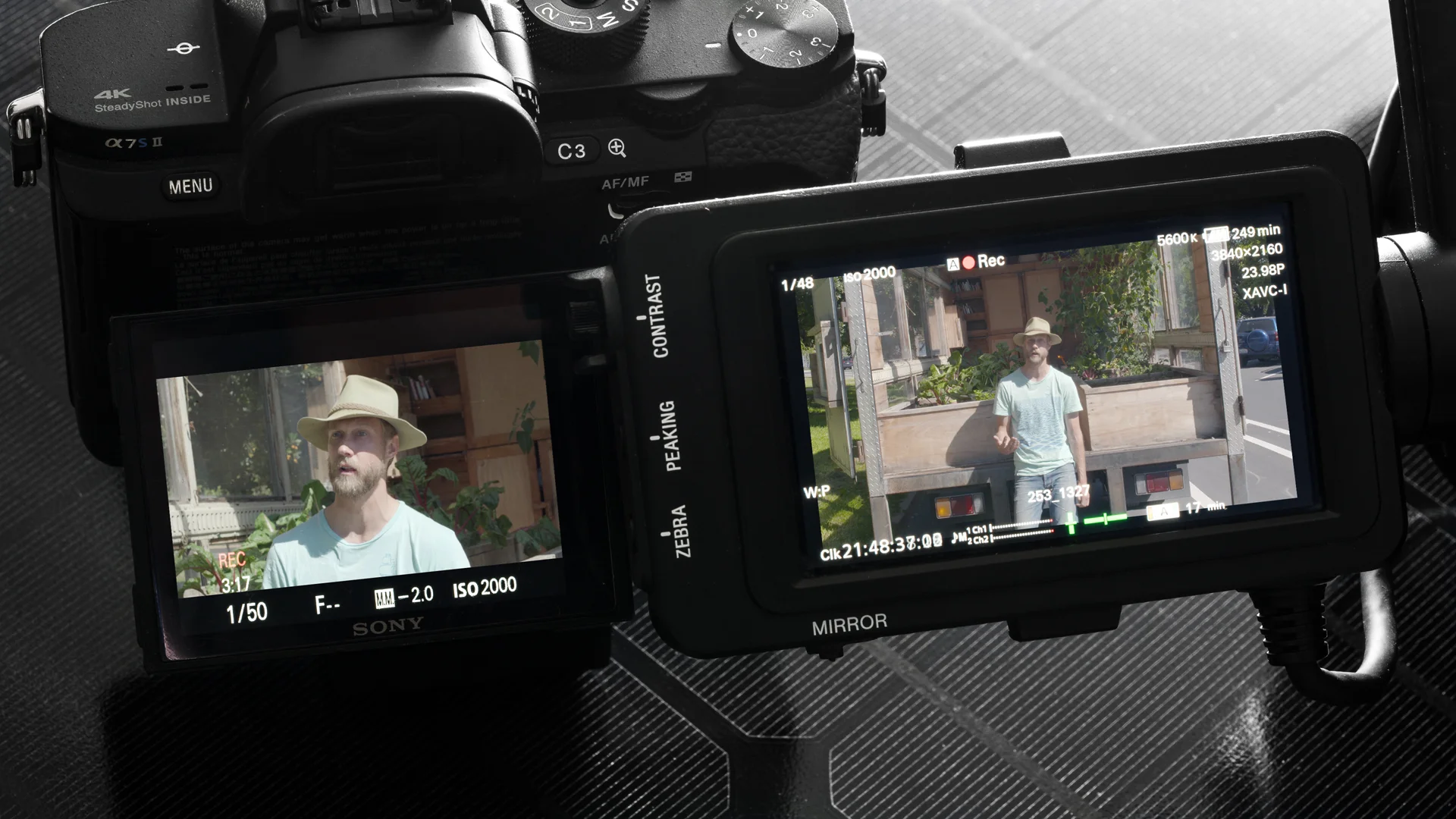A Super Easy Trick for Framing a Two-Camera Interview
In the world of video, shooting an interview with two cameras is a well-known method of improving the editing workflow and making for a more dynamic scene. You can cut from a wide angle to a close-up for dramatic effect, or simply to hide an edit where two sentences are stitched together. In general, having two angles is a good way to approach a talking-head interview.
However, if you're quickly setting up for an interview scene, it can sometimes feel like a shot in the dark as to whether the angles will cut well together — especially if you're setting up both cameras yourself. A simple rule-of-thumb is to make the two angles at least 30 degrees from one another and to place the subject's eyes in the same general spot of both views. Yet these framing tips don't offer much storytelling advantages when it comes to the editing of the piece. Over time I found another important detail to be a much better way of distinguishing the two camera angles.
The trick is in the framing of hand motions
Everyone has a different way of using their hands to supplement what they're saying during conversation. Some people use very few hand motions, perhaps only when struggling to find a word, and others use them constantly to emphasize ideas throughout each sentence. Too many hand motions can appear distracting in a video, and too few hand motions can detract from the impact of a good soundbyte. No matter the type of body language of the person in front of the camera, it's up to the video team to make the subject look good.
My go-to technique for framing two cameras is quite simple: one angle includes hand motions and the other angle does not. This general approach doesn't take into account other variables like how far apart to place the cameras — it's a loose framing technique that can help you to think about how you're portraying the subject story-wise. Some people are better on-camera than others, but this shouldn't prevent you from using your movie magic to create a meaningful flow of ideas that looks as fantastic as it sounds. By dividing the cameras around the hand motions, you are able to choose when to emphasize the person's bodily expressions as opposed to just the words they're saying.
Body language in storytelling
Such an important part of editing dialogue is crafting the messaging and confidence of the person on-screen — usually making them look and sound like they know what they're talking about. When capturing a real, unscripted flow of ideas from someone who didn't study acting or doesn't think much about their body language, you become their advocate for how they appear to the world. Their knowledge doesn't always enter the world through perfectly thought-out nuggets of wisdom. A good interview is one that convinces the viewer that the person speaking has the credibility and confidence to speak on the given topic, even if that means most of the magic took place in the edit. This framing trick, combined with other considerations in the context of your video, could help you to create the confidence that your video subject is counting on you to help them convey.
“My go-to technique for framing two cameras is quite simple: one angle includes hand motions and the other angle does not.”
Adam Kennedy
Creative Director, Resolution Workshop
Beyond directing, writing, editing and animating, Adam doodles in 3D landscapes, tinkers with electronics and hangs out with his dog named Magnet. He enjoys blending digital techniques in unexpected yet meaningful ways.


